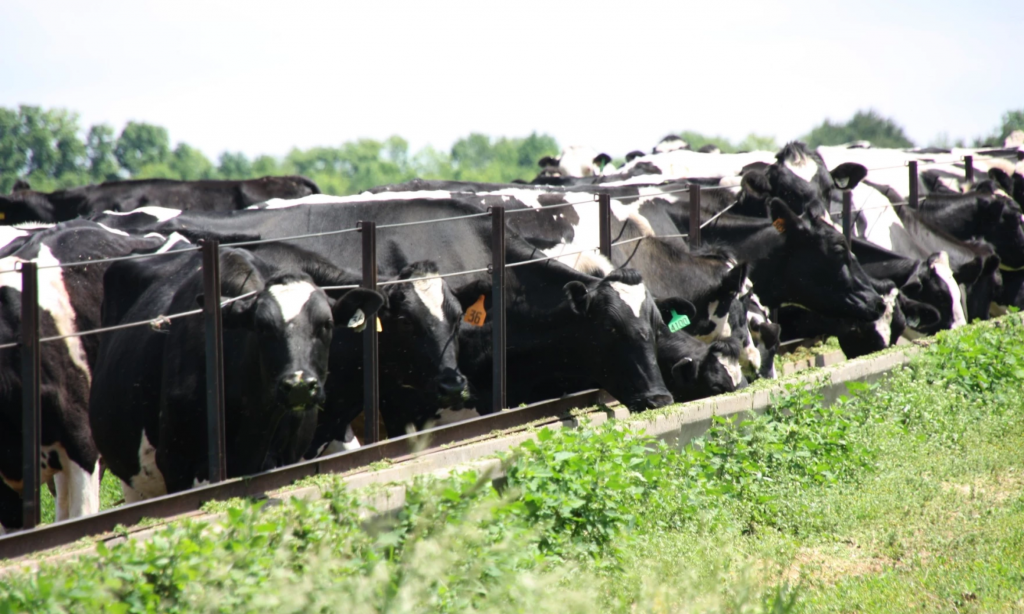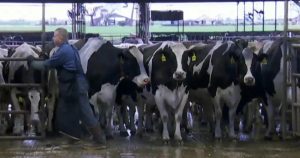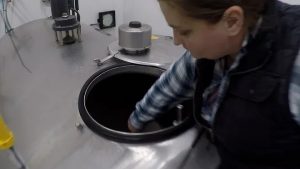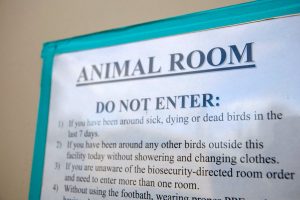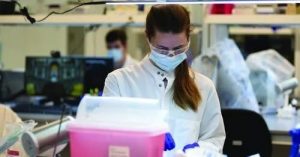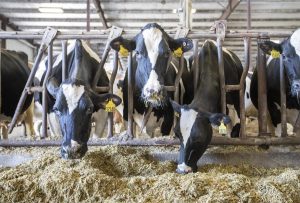
The virus can spread from dairy cows to poultry, and vice versa. Unlike flocks, most dairy cattle recover a few weeks after an infection, but producers are required to discard milk from sick cows.
“Producers are concerned and being active to prevent infections,” said Zelmar Rodriguez, a veterinarian and assistant professor at Michigan State University. “The ones who have been affected know that it’s a big economic hit.”
In late April, the U.S. Department of Agriculture issued a federal order that requires milk-producing dairy cows to test negative for the virus before crossing state lines. That includes sampling raw milk, which has been found to contain a high concentration of the virus.
The USDA also rolled out a voluntary program in late May to help gather more information and give another testing option to producers. Samples come from a bulk milk tank that represents the whole herd, rather than individual cows. Herds from six states – including Kansas, Nebraska, Ohio and Texas – have enrolled so far.
Iowa and Michigan, both states with high case numbers in the Midwest, have opted for more requirements.
States with more testing
Soon after Iowa’s first confirmed bird flu infection at a dairy in June, the state’s agriculture department announced it was requiring testing at dairies within a 12-mile radius of infected poultry sites.
“This has resulted in and will continue to result in more information, which will hopefully help us to learn more about the origin, the spread and the impact of the virus, and to hopefully help to contain its further spread,” said Grant Menke, the state’s deputy secretary of agriculture, during a recent webinar hosted by Iowa State University Extension.
Dairy producers within the testing zone work with their vets to collect samples from a minimum of five sick cows and bulk milk tanks. Samples go to the Iowa State University Veterinary Diagnostic Lab for analysis and then to the USDA’s National Veterinary Services Laboratories for confirmation.
If bird flu is confirmed, state officials coordinate with USDA epidemiologists to lead on-site investigations. They meet with producers and try to uncover how the virus was introduced, potential ties to other cases and clues about how it’s spreading.
Michigan, one of the states with the most cases in the U.S., does not have mandatory surveillance testing like Iowa. But it’s taken a more direct approach to boosting biosecurity.
On May 1, the Michigan Department of Agriculture and Rural Development issued the HPAI Risk Reduction Response Order. It requires all Michigan dairy farms and commercial poultry operations to develop and implement practices to reduce the spread of the virus.
This includes designating an area on the farm with extra security, developing a cleaning and disinfection plan for people and vehicles who enter and exit, and keeping records.
With county and state fairs just around the corner, several Midwestern states, including Iowa and Michigan, have created new rules for testing before participating.
Others are expected. South Dakota’s state vet, Beth Thompson, said the state will soon provide recommendations.

A ‘developing field’
Some states may be more proactive due to a history of economic pain from bird flu, said Christine Petersen, the director of the Center for Emerging Infectious Diseases at the University of Iowa. Bird flu took a $1.2 billion toll on Iowa, the top egg producing state in the U.S., in 2015.
But not every state has a veterinary college and diagnostic lab, like Iowa, to run tests. And active disease surveillance – random sampling in a specific population or area – is expensive, Petersen said.
Bird flu testing is a “developing field” for dairy cattle, said Pat Gordon, a professor of veterinary medicine at Iowa State University, during the webinar with Menke.
“As of March 22 of this year, we didn’t even realize that this virus was able to infect dairy cattle,” Gordon said. “And we’ve not seen influenza in cattle much throughout my career, which spans over 30 years.”
Gordon said the best diagnostic tool for milk-producing dairy cows at this time is a PCR test, which can detect trace amounts of genetic material in milk. However, it doesn’t reveal whether the virus is intact and infectious.
He said researchers are also using a more rapid test called NP-ELISA with blood and milk samples. It shows whether a cow’s immune system is producing antibodies to fight the virus.
“It helps us understand the length of time that a cow has been infected,” Gordon said. “So, if she’s PCR positive and NP-ELISA negative, she’s only been infected for a couple of days.”
Scott Poock is a University of Missouri Extension veterinarian. As of June 27, the state did not have a confirmed dairy herd infection.
Poock said he can understand why Iowa, a big poultry state, would want more bird flu testing.
“I can see their concern,” Poock said. “And when you look at the fact that yes, this causes some trouble with cows, but in general you don’t have death in the cows, where it can just wipe out a poultry farm.”
Human risk
Some disease experts worry that without additional testing and tracking, warning signs may be missed if the virus mutates into a more infectious strain for people.
“If you only test the people that get sick, you could be weeks behind on spreading between people that is happening at a low level and not causing illness,” Petersen said.
She said she’d like to see more testing for farm workers, veterinarians and others who are in facilities with infected cows.
While the U.S. Centers for Disease Control and Prevention say the risk to humans remains low, H5N1 has infected at least three dairy workers – one in Texas and two in Michigan. All developed eye infections, and one also had respiratory symptoms.
